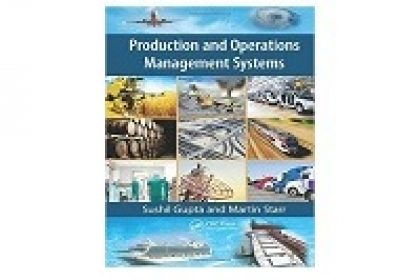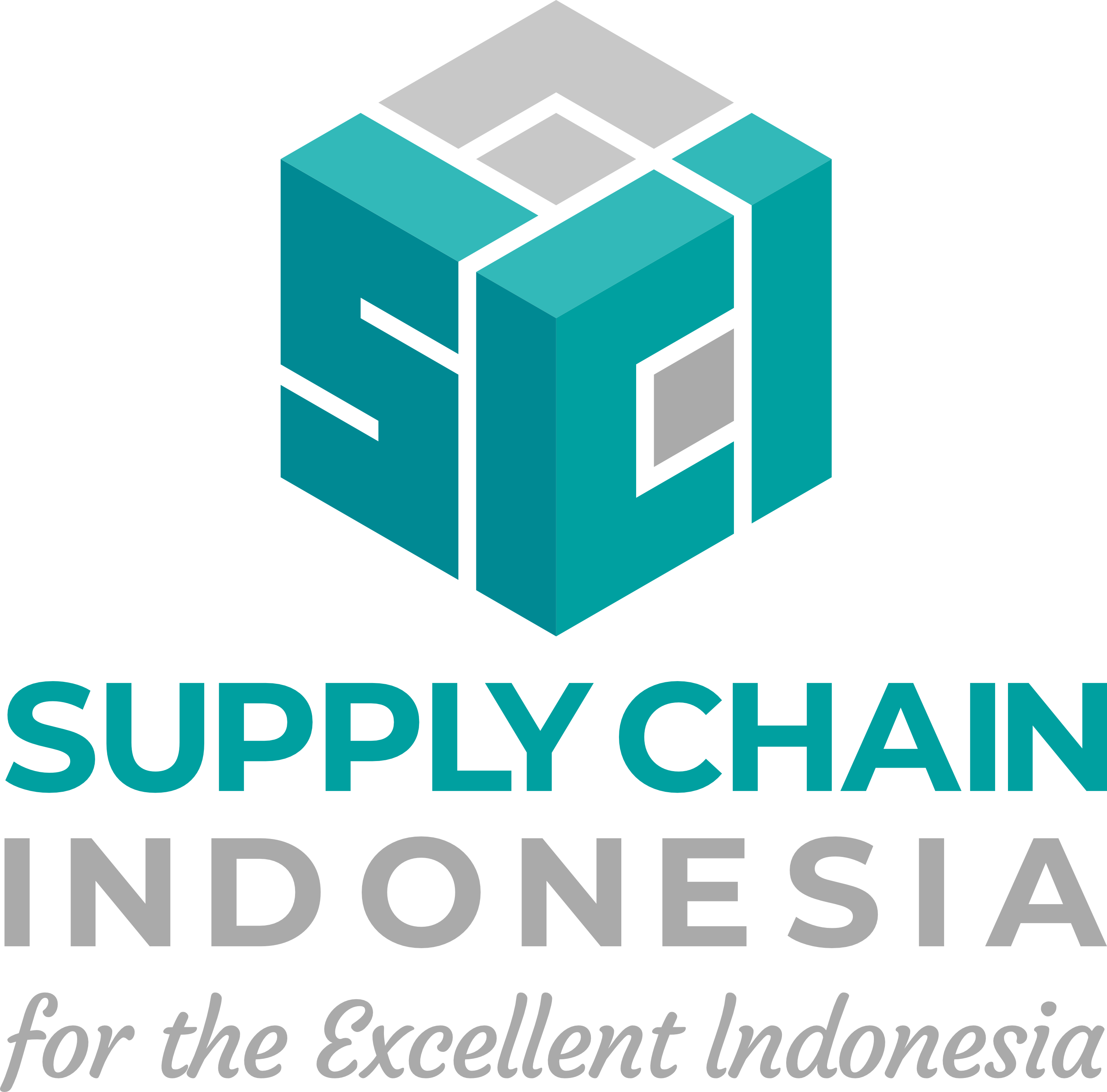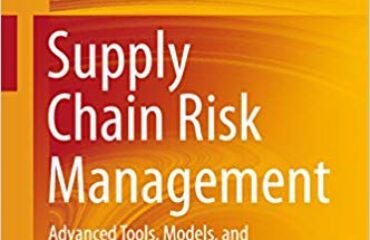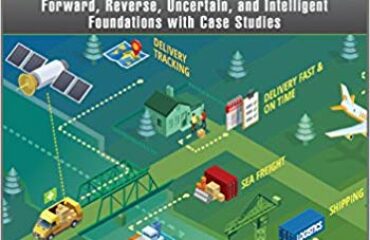
Production and Operations Management Systems
Sushil Gupta, Martin Starr
ISBN 9781466507333
Features
- Provides a concise format for a complete production and operations management undergraduate course
- Presents the POM interface with other functional areas
- Offers slides, lectures, Excel worksheets, and solutions to short and extended problem sets are available on the Downloads / Updates tabs
- Covers material appropriate for all technical levels coming from different disciplines
Summary
Since the beginning of mankind on Earth, if the “busyness” process was successful, then some form of benefit sustained it. The fundamentals are obvious: get the right inputs (materials, labor, money, and ideas); transform them into highly demanded, quality outputs; and make it available in time to the end consumer. Illustrating how operations relate to the rest of the organization, Production and Operations Management Systems provides an understanding of the production and operations management (P/OM) functions as well as the processes of goods and service producers.
The modular character of the text permits many different journeys through the materials. If you like to start with supply chain management (Chapter 9) and then move on to inventory management (Chapter 5) and then quality management (Chapter 8), you can do so in that order. However, if your focus is product line stability and quick response time to competition, you may prefer to begin with project management (Chapter 7) to reflect the continuous project mode required for fast redesign rapid response. Slides, lectures, Excel worksheets, and solutions to short and extended problem sets are available on the Downloads / Updates tabs.
The project management component of P/OM is no longer an auxiliary aspect of the field. The entire system has to be viewed and understood. The book helps students develop a sense of managerial competence in making decisions in the design, planning, operation, and control of manufacturing, production, and operations systems through examples and case studies. The text uses analytical techniques when necessary to develop critical thinking and to sharpen decision-making skills. It makes production and operations management (P/OM) interesting, even exciting, to those who are embarking on a career that involves business of any kind.
Author(s) Bio
Sushil Gupta is a Knight Ridder Center Research Professor in the College of Business Administration at Florida International University, Miami.
Martin Starr is Distinguished Professor of Production and Operations Management Emeritus at the Crummer Graduate School of Business at Rollins College, Florida, and Professor of Management Science and Operations Management Emeritus at Columbia University Graduate School of Business, New York.
Table of Contents
Introduction to Production and Operations Management
The Systems Viewpoint
Strategic Thinking
Explaining P/OM
Use of Models by P/OM
The Systems Approach
Information Systems for Manufacturing and Services
Defining Operations
Working Definitions of Production and Operations
Contrasting Production Management and Operations Management
P/OM—The Hub of the Business Model
Transformation Process
Costs and Revenues Associated with Input–Output (I/O) Models
P/OM Input–Output Profit Model
Productivity—A Major P/OM Issue
The Stages of P/OM Development
Organizational Positions and Career Opportunities in P/OM
Summary
Review Questions
Problems
P/OM History Archive
Archival Articles
Readings and References
Source of Video Clips on Manufacturing
Alliance for Innovative Manufacturing (AIM): How Everyday Things Are Made
Strategy, Productivity, and History
The Systems Viewpoint
Strategic Thinking
Measurement of Productivity
System-Wide Issues Impacting Productivity
History of Improvements of P/OM Transformations
Summary
Review Questions
Problems
Readings and References
Workload Assessment (Forecasting)
Introduction
Time Series and Extrapolation
Forecasting Methods for Time-Series Analysis
Regression Analysis
Coefficients of Correlation and Determination
Forecasting Errors
The Delphi Method
Pooling Information and Multiple Forecasts
Product Life-Cycle Stages and Forecasting
Summary
Review Questions
Problems
Readings and References
Capacity Management and Aggregate Production Planning
Definitions of Capacity
Introduction to Aggregate Production Planning
Example 1: Aggregate Production Planning
Example 2: Aggregate Manufacturer’s Production Planning
Example 3: Aggregate Production Planning in a ServiceIndustry
Summary
Review Questions
Problems
Readings and References
Inventory Management
Introduction
Types of Inventory Situations
Inventory-Related Costs
EOQ Model
EPQ Model
ABC Classification
Quantity Discount Model
Lead Times
Order Point Policies
Perpetual (Fixed Quantity) Inventory Systems
Periodic Review (Fixed Time) Inventory Systems
Summary
Review Questions
Problems
Readings and References
Scheduling
Introduction
Classification of Scheduling Problems
Two Machines Flow-Shop Problem
Single-Machine Scheduling
Dynamic Scheduling Problems
Summary
Review Questions
Problems
Readings and References
Project Management
Introduction
Managing Projects
Good Project Managers Are Leaders
Basic Rules for Managing Projects
Project Management Origins
Project Network
Critical Path and Project Duration
Early Start and Early Finish Times
Late Start and Late Finish Times
Slack Time
Reducing Project Duration—Crashing Activities
Cost Analysis
Crashing Multiple Paths
Probabilistic Projects
Resource Management
Summary
Review Questions
Problems
Readings and References
Quality Management
Introduction
How Much Quality
Dimensions of Quality
The Costs of Quality
QC Methodology
Control Charts for Statistical Process Control
Control Charts for Variables: x-Bar Charts
Control Charts for Variables: R-Charts
Control Charts for Attributes: p-Charts
Control Charts for Attributes: c-Charts
Acceptance Sampling
International Quality Standards
Industrial Recognition of Quality
Summary
Review Questions
Problems
Readings and References
Supply Chain Management
Introduction
Acquisition Chain Management
The Purchasing Function
Receiving, Inspection, and Storage
Requiring Bids before Purchase
Certification of Suppliers
Global Sourcing
Distribution Chain Management
e-Business
Logistics
Forecasting and Inventory Decisions in Supply Chain
Bullwhip Effect
Summary
Review Questions
Problems
Reading and References
Long-Term Planning (Facilities, Location, and Layout)
Facilities Planning
Who Does Facilities Planning?
Models for Facility Decisions
Location Decisions—Qualitative Factors
Structure and Site Selection
Rent, Buy, or Build—Cost Determinants
Facility Selection Using Scoring Models
Location Decisions Using the Transportation Model
Location Decisions Using Breakeven Models
Facilities Layout
Load–Distance Models
Heuristics to Improve Layout
Finding the Load Matrix
Summary
Review Questions
Problems
Readings and References
Innovation by P/OM for New Product Development (NPD)and Sustainability
Introduction to NPD and Innovation
Organizations Must Be Adaptable
Competition for New Ideas, Resources, and Customers
Product Innovation Failures Can Be Avoided
Continuous Project Management Is a Successful Innovation
New Growth Platforms for Innovation
The Dynamics of Brand Share
Innovators and Imitators
Innovators’ Production Strategies
Summary
Review Questions
Problems
Readings and References
Appendix A: Quantitative Models
A.1 Breakeven Models
A.1.1 Linear Breakeven Equations
A.1.2 Breakeven Charts
A.1.3 Interfunctional Breakeven Capacity Planning
A.2 Transportation Model of Linear Programming
Reference
Appendix B: The z-Table
Index
Sumber:
https://www.crcpress.com/Production-and-Operations-Management-Systems/Gupta-Starr/9781466507333
Info Pemesanan Buku:
Petra Books Bandung
Meiske Pratiwi
meiske.ss@gmail.com
08112037369



